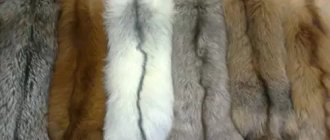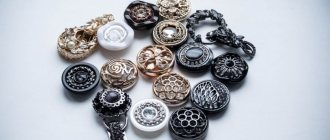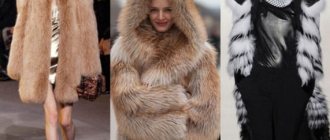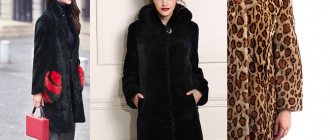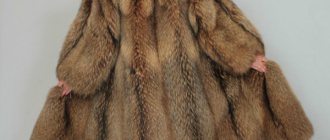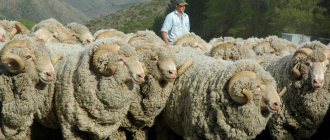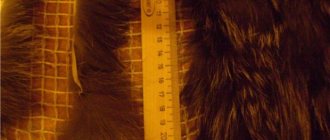Selection system
Saga Mink's production is based on unrivaled quality. Before creating a mink coat, manufacturers carefully select the material. Raw materials undergo several stages of thorough testing.
Saga Mink uses a specific rating scale when assessing the quality of hides and calculating the price of the finished product. The mink is assessed according to the following parameters:
- fur type,
- gender of the animal
- skin size,
- fur color,
- density,
- smoothness,
- elasticity.
"mink coat. size 42." saga mink ranched mink »» bag at online auction
All sections Aviation Auto, Motorcycle, Spare parts Antiques and Art Household appliances Videos, Movies Vintage Children's For business Home, Garden, Dacha Jewelry and decorations For the New Year Books, magazines, newspapers Collectibles Computer equipment Beauty and health Music Real estate Clothes, Shoes and Accessories Watercraft DIY Sports equipment Construction and Repair Telephones Deleted Services Flora and Fauna Clocks Electronics and Optics Miscellaneous
- rub.
Delivery
Variety of palettes
What should a real Saga Mink fur coat look like? Models must not only have a label confirming quality, but also a certain color scheme, which is unique to Saga Mink.
Among the colors of mink blanks used in fur coat production are:
- Black one-color minks, which are sometimes distinguished by barely noticeable inclusions. Saga Mink uses only natural color without added dye. Therefore, classic products are of unsurpassed quality.
- The palette highlights brown-red mink. This color is mainly used in production. Preference is also given to natural color without dye.
- Real Saga Mink can be a darker deep brown color. Mostly the skins are one color or with light inclusions.
- A light shade of brown is present in the fur coat models of this brand. Mink of this color is produced in large quantities and is popular among buyers.
- A real mink coat can be gray in color from dark to light. Manufacturers try not to add dyes to natural fur. Sometimes a combination of gray and brown is used.
In addition to all the above colors, beige and cream mink are also available among fur coat models. They are distinguished by their tenderness, femininity and elegance, as can be seen from the photo. Each model has a label that indicates the brand name of the color of the fur coat.
Scandinavian mink
The most common farmed mink on the planet is the Scandinavian mink. It accounts for as much as 80% of the world mink market. It is grown in northern Europe: Finland and Scandinavia.
Scandinavian fur is distinguished by a very thick undercoat and medium-length pile, although there are several varieties of Scandinavian mink. There is both low fur (Denmark, Kopenhagen Furs) and high fur (Finland, Saga Furs).
Another variety of Scandinavian mink is the “polar” mink. This is a brown mink with a very thick undercoat and long fur that looks more like a sable than a mink.
Finnish mink (Saga Furs), as mentioned above, is distinguished by long pile and not very thick undercoat. This is an auction fur that is bought at the Finnish Furs Sales in Helsinki. Skins in perfect condition are designated Saga Royal Mink, skins of good quality are labeled “Saga Mink”.
Danish mink (Kopenhagen Furs) has a lower pile. From this manufacturer you can find different selections: short-haired “corduroy”, as well as Danish mink with taller fur. Fur from Kopenhahen Furs is one of the most wearable and lightest. It has a wide color spectrum.
Cost formation
A Saga Mink fur coat is quite expensive. Pricing depends on:
- sex of the animal,
- quality of fur,
- skin size.
Male animals have longer fur, and their skin is more elastic. Women's skins have short hair and less durable skin. Which animal is better? It depends on the model. Basically, men's skin is used for long ones, and women's skin is used for short ones, but there are exceptions. In addition, there are size and quality criteria. They are determined by an international association. The quality depends on the density of the fur, its length, elasticity and shine. According to these criteria, fur coats are assigned one category or another, which is reflected on the label.
Categories
The Saga Mink Royal mink coat is a product of the highest category, and accordingly, its cost will be the highest. To make such models, they choose from about half a million skins, of which only 3 thousand receive the Royal label. What should a real Royal be like? To receive such a title, the animal’s skin must be simply perfect. There is no room for flaws in it. Its fur should be thick, dense, uniform. And these are not all the indicators for which Royal is awarded. According to reviews, owners of fur coats of this category cannot name a single disadvantage. It’s not for nothing that only the best of the best are used for production.
Superb Quality takes second place after Royal. These fur coats are no less chic. For the production of such products, 10 thousand skins out of 1.5 million are selected. Superb Quality, according to reviews, is no worse than the previous category, but its cost is slightly lower.
Reviews about the Saga Mink fur coat highlight another category of products from Saga Mink - Saga Select. This is the cheapest category of fur coats from this manufacturer. Despite this, the quality and appearance of the products remains unsurpassed. According to reviews, it is noted that fur coats in this category are highly durable. 1.5 million skins are involved in production, of which 50 thousand are classified.
Among the new fur products of the season, the Saga Mink fur coat is distinguished by its elegance, high quality and unsurpassed fur. All this is due to the fact that the skins for Saga Mink undergo careful selection before going into production. Despite the high cost, Saga Mink is popular among buyers.
The path to the perfect fur coat, or why we sew from fur Saga Furs
The SagaFurs auction is the second largest fur auction in the world. The main products are arctic fox, fox (about 2 million units sold per year), mink – 6.2 million units. Saga is the very point where the fur and fashion industries intersect. This living organism determines the price “at the moment.” Then there will be a new auction and a new price. Quite high, despite some “fragility” of the product. This is the only auction house whose shares are listed on the stock exchange.
***
– Päivi, how can you find out if the fur was purchased at your auction?
–
If you notice the Saga Furs label when purchasing a fur coat, this means that the fur was purchased at a Finnish auction. Our clients receive labels along with the purchased fur. The second label sewn onto the product indicates the manufacturer. Plus, the Saga Furs mark indicates that the raw materials are sorted according to Saga criteria. This is also very important. The highest quality skins are those with Saga Lumirojal labels sewn on them, followed by Saga Royal and then Saga. Actually, your clients can make their own profits using the example of fur coats sold in your salons, because the fur for them is purchased at our auction.
— Tell our readers about the auctions in more detail.
Auctions take place in December, March, June and September. Last year's March auction was the largest in our history. The recent September auction concluded the sales season. It's not that big. The March assortment is much wider and the quality is much higher.
– Why exactly in March?
–
Furs arrive at our auction for sorting in November, and it is impossible to prepare a large amount of fur for auction in time for the December auction. In February and March, all the world's most significant exhibitions of finished products take place in Beijing, Hong Kong and Milan, where our manufacturers receive trade orders for the next season. Trading companies already know how much to order, because the sales season has already passed and sales results have been summed up. The manufacturer buys raw materials for these orders. In September something else will be purchased. March is characterized by lion's offers. This is an annual occurrence.
– What determines price fluctuations?
- From a proposal. From demand. From fashion.
– The European market is in a state of stagnation, and the fur business is at the top. There is a fur trade boom in the world. Why?
– Indeed, we don’t feel a crisis at all in terms of prices and sales. The highest prices were last season at the March auction.
– What is the reason for the popularity of fur?
- There are several of them. Almost all high fashion houses have been including fur in their collections for a number of years, we are talking about Prada, Gucci, Roberto Cavalli, Jean Paul Gaultier and others. They all have fur on the catwalks. This is the first.
Second: China has become the main producer of fur, but in addition it is also the main consumer of finished fur products. If earlier the Celestial Empire exported these products, now, with increasing prosperity, the country has begun to produce them for the domestic market.
– Who was previously considered the main consumer?
- Russia. All these changes took place after the crisis, over the past two or three years. Nowadays, many people want to purchase not one-time items for one day, but fashionable and durable items. And then they understand that fur is a natural ecological product. People love fur, and - I emphasize - the most important thing is that it is now at the peak of fashion. Finland is currently the world's main producer of Arctic fox and fox. Although few people know about this in Russia.
– As far as I remember, China produced quite a lot of fur, where did it suddenly disappear, why do the Chinese buy fur from you?
– Indeed, just a few years ago China produced a huge amount of raw materials, but now it has sharply reduced production. The answer is obvious. Buyers want to purchase high-quality fur in large sizes. And if we talk about European countries, other aspects have always been familiar to them - ethical standards, environmental requirements. This also came to the fore.
– Is all your fur Finnish?
– At auction we sell up to 95 percent of the Arctic fox and fox that are produced in Finland. And a little comes from Norway (silver-black fox and arctic fox).
The mink collection consists of only one third Finnish mink, the rest comes to auction from producers from other Western European countries.
The auction is selling the world's largest collection of broadtail and astrakhan fur from Afghanistan, up to 500 thousand skins per year. This way you can buy everything in one place.
– Does the quality of fur depend on the nutrition and maintenance of animals or on the climate in which the animals are raised? It's cold in Finland, hot in China...
– In China, the livestock was increased, but the quality was monitored little. And quality is, first of all, truly nutrition and maintenance. It is important what cages the animals live in. The environment is important - in Finland it is strictly forbidden to litter the environment. All farms are built to strict European standards. In our country, the association of fur breeders, together with the auction, has developed even more stringent criteria for keeping animals than in the European Union. The control was carried out in conjunction with the auction. Fur farms are required by law to comply with all the rules, but we also inspect farms and certify these fur farms. We guarantee transparency of the entire chain and responsibly declare that the goods come from safe farms that are certified, and we are responsible for this. Our clients can determine from the lot where the fur is from, they even have the right to go there. Last year there was such a case: representatives of the famous English company Burberry went to a farm in the city of Vaasai in winter and made sure that the animals were kept in good conditions, received high-quality food and were in very good condition. This is very, very important for the fashion industry.
– Where are the most fur farms located in Finland?
– The main concentration of farms is in the Vaasa region. This has developed historically, and it was from there that fur farming began in Finland. Many Finns (including Finnish Swedes) at one time immigrated to America and Canada, which at that time were the main producers of fur. Later they returned back, but not alone - they brought animals with them and began to breed them. Therefore, these traditions have taken root in the region and even given impetus to profitable business. However, there were also personal reasons for this phenomenon. People in Pohjanmaa are more energetic, plus this area is seaside, which means fishy. And fish waste is one of the main feeds for these animals. It should be noted that the entire fur industry is built on waste from the food industry. That is, animals are recyclers of waste from the meat processing, chicken and fishing industries. There are special kitchens where food is made, and it must be balanced if we want the skin to be of high quality. Otherwise, you can poison the entire herd in one day. That is, farmers also have a responsible job. This is how small things add up to big things, which is why the furs produced in Finland are of high quality.
– Don’t fur farms spoil the environment?
– If we are talking about animal waste, then it is collected and used for the production of fertilizers.
If we talk about animals in general, their remains are sent to factories where disposal takes place. Parts that can be used to produce animal protein are used to obtain feed additives. If something cannot be used, it is destroyed, but again we are talking about know-how, because energy is obtained from all this. Now many fur farms, together with research institutes for the use of waste, produce biofuel.
Well, if a fur coat or hat becomes unusable, they must also be recycled, but unlike plastic, they decompose well.
– How is fur sorted? Is it sorted before it goes to auction or does it all happen during the process?
– Farmers do not sort fur; they deliver almost all of their products to auction. Naturally, each skin has its own code, then it goes into a “common pot”, sorted by color, size, quality and all other parameters.
– It turns out that low-quality skins also end up at auction?
– Indeed, not all skins are ideal. Furs with defects fall into the low-grade category. It is also sorted by defects and later put up for auction at a lower price. After all, you can work with fur, cut something out of it and also use it in production. Low grade skins make up a very small percentage.
– And they also have the Saga sign on them?
– No, it is assigned only to high-quality furs.
– Can the sorter see all hidden defects?
– The fur sorting process is as automated as possible. The main work is done by machines. The fur passes through a chamber that determines the color and size. This eliminates the human factor, such as eye fatigue when determining color. Next, the fur goes through the hands of experienced sorters at least twice, who determine the quality of the fur, shade, length of the guard coat, and so on.
– It turns out that if I decide to buy a fur coat, without a specialist I will never be able to determine whether it is a quality product or not? And can I only rely on the integrity of the sellers?
- I guess, yes. Many people advise blowing on the fur, plucking it, pulling it, tearing it. In fact, this is all frivolous.
- What to do?
– I would recommend buying fur products in stores that you can trust, that have been on the market for several years and have a strong reputation. It’s definitely not worth buying a mink coat on the market.
– There are so few large fur stores in Finland, why? It would seem that the auction is at hand, all the cards are in hand...
– In small Finnish fur shops you can buy mainly classic products. These salons are literally lost in Helsinki. If someone decided to sell designer fur products, they should open a store in the center of Helsinki, for example next to Louis Vuitton.
– Is this because of the “green” movement?
- No. In Finland there are generally few people who buy expensive clothes.
– Is it a matter of tradition?
- It's a matter of mentality. Finnish women's outlook on life has changed. A very limited number of ladies can afford to buy a fur coat at a price equal to their salary or even higher. And if a woman still wants to do this, she would rather buy a fur coat in Paris or Milan. Because in Finland the fur market for designer fashion products is practically non-existent.
The highest sales today are at the Ajatar store in Helsinki. On good days they sell two or three units of fur products.
- And who is the buyer?
- Russian tourists. And at Max Mara, most of the serious purchases come from Russian buyers. It turns out interesting: it seems that many Finnish women like fashionable natural fur coats, but, on the other hand, our conservative trade does not purchase modern designer products because it wants to eliminate risks. Products are expensive, and a wide range of products in stock is not justified when demand is low.
Therefore, it is more profitable to buy a large number of inexpensive classic items and sell them than to then think about what to do with the leftovers. That is, the market, unlike Russia, is completely different.
– In Russia, the fur business, on the contrary, is too popular.
— There is a lot of competition between stores, between manufacturers. The market is bigger. All of Finland has a population of 5 million, the same as in St. Petersburg. And that’s why they can’t be compared.
– And the attitude towards money is also different...
– A Finnish woman will never really give up her salary for a fur coat. But fur is still appreciated. In past very cold winters, women in Helsinki took out their old fur coats and put them on. By the way, grandmother’s fur coats and hats with earflaps suddenly became very popular among young people. It turned out that real fur, unlike artificial fur, warms!
– And yet in Finland it’s not dangerous to wear natural fur coats; they won’t splash paint on them?
- No no! I wear a fur coat every day in winter. And the first thing they ask me is: “Where did you buy such a thing?” This question suggests that you like fur and want to have it.
-Where did you buy it?
– One was at an exhibition in Milan, the other was sewn in Helsinki in a small special studio.
– And they were made from Saga fur?
- Yes.
– Sorry for the amateurish question, but is it possible to just buy a fur coat kit at an auction?
- Almost impossible. In order to collect it, you need to select the same type of skins, which means sorting out a huge amount of fur. Manufacturers buy from us already sorted batches of the same type of skins.
– Is it possible for a private client to buy skins for a fur coat on the farm?
– This is also impossible, because you will have to buy 30-40 skins, and for this you will have to sort several thousand. Can you do it yourself? In our business, trust in the quality of sorting is one of the main indicators.
– As I understand it, small buyers have nothing to do at the auction?
“We trade raw materials, then dressing follows, and after that the skins need to be re-sorted again. They must be identical. Therefore, if someone buys even 700 skins, he will not be able to sew the perfect fur coat. Mostly large wholesale or medium wholesale producers come to the auction.
– Please explain how the auction works before the auction?
– To become an auction buyer, you need to register on the site. We must know everything about the manufacturer. Clients can come to us in advance, on the eve of the auction. View the furs that will be offered for sale, look through the catalogs (they are in different languages). Get acquainted with demonstration lots, and then buy at auction... 2-3 thousand skins and more. And they all must be identical. Our customers know that it will be so. If they didn't get what they wanted, the system wouldn't work.
Potential buyers work from eight in the morning until six in the evening. The client usually comes to the auction with a broker. There are no loitering or curious people here. They come here to do business.
– Representatives of which countries buy the most fur today?
– The main market is China, this is the largest group of buyers. In principle, the entire geography of the world is represented. This is Greece, and Russia, and Canada, and America...
– Is the price of fur constantly rising?
- The price is high today. And at the moment there are no prerequisites for its reduction. A person who bought a fur coat that cost 20% less today has the right to ask the question: “Why has the cost increased so much?” But because raw materials have become more expensive! Demand exceeds supply.
– Excuse me, but how is food organized at the auction? It must be difficult for the Chinese to eat Finnish food?
– Many cuisines from the world are represented in our restaurant. There is Chinese cuisine, and Italian, and Greek.
– And if I come to buy fur at an auction, can they provide me with a specialist who can help me do this?
– Of course, provided that you are a wholesale buyer. We can recommend you an experienced broker, trading is intense, so you need to be a professional buyer. A person who knows English perfectly when going to an auction for the first time will not even be able to get his bearings and understand what is happening in the hall. We train potential wholesale buyers in special courses to work with catalogs and purchase at auction.
– As far as I know, the auction pays great attention to the work of the design center or, as it is positioned, a global creative laboratory.
– Saga Design Center is part of our company. Despite the fact that the laboratory is geographically located in Denmark, it belongs to the auction and is part of the marketing organization. The design center was created in 1988. Its task is to develop new technologies for working with fur and provide them to manufacturers of finished products and designers. During its existence, this design center was visited by more than 20 thousand designers from all over the world. By the way, manufacturers from Russia have known Saga technologies for a very long time and widely use them in the production of hats, accessories and other fur products. Saga has a constant focus on working with young designers around the world.
For example, in Russia, the Saga design center works closely with the Department of Fashion Design of the St. Petersburg State Academy of Arts and Industry named after. A. L. Stieglitz and with the Omsk School of Costume Design. The best students, together with teachers, repeatedly visited the Saga design center in Denmark to study technologies for working with fur.
All manufacturers can visit the design center and be inspired by new ideas that they can subsequently implement in production. Innovations will reach mass producers faster, and this is very important.
– And in conclusion, a purely feminine question: how long can a mink coat last?
– It depends on how you wear it. If you wear it every day and travel on the subway and tram, then wear it out within a season. If you wear it when going out, store it in a cold place, and clean it in a special dry cleaner, you can wear it for 10 or 15 years.
Interviewed by Svetlana Aksenova, personal. corr.; Helsinki.
Interesting!
“In a minute, furs worth several hundred thousand euros are sold at auction. — Saga Furs auction sales reach more than 450 million euros per year. — Price fluctuations always vary from auction to auction within 5–10%, sometimes more significant changes occur. — It’s always cold in the screening room (2,000 sq. m) of Saga Furs. — After purchase, the skins are placed in huge boxes located in a special room. — Thanks to cooperation with transport companies, the buyer can send the purchased shipment to its destination the very next day. — The floor in the screening room is constantly wiped with a special compound. It is important to sanitize the room to avoid allergies. — There are temperature and humidity sensors. — White coats at auction - protection from fur.
Fashionable fur coats
Today, models of fur coats made from Scandinavian mink in pastel shades are at the peak of popularity. In addition, contrasting options are on trend, complemented by elegant black lines.
“Stardust” are also fashionable models. Dark mink fur is decorated with light fibers. The effect is amazing. And such fur coats look expensive and elegant.
If the choice fell on dark shades, then you should pay attention to the following colors:
- Luxurious black.
- Soft chocolate.
- Nice grey.
- Glamorous graphite.
A wide variety of fur coats are made from Scandinavian mink:
- Manto.
- Bow-tie fur coats.
- Classic models.
- Styles in Chanel style.
Both long and short models are in trend. Sleeves can also be of different lengths. Therefore, every representative of the fair sex today will be able to choose a beautiful mink coat for herself. The main thing is that it emphasizes all the advantages of the figure, hides flaws and fits perfectly into the overall style of clothing.
